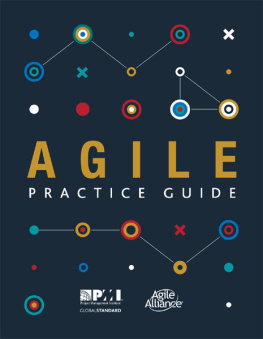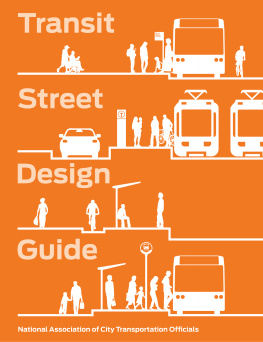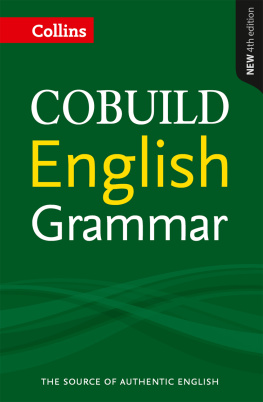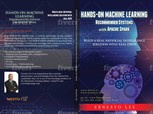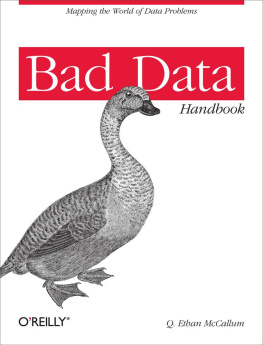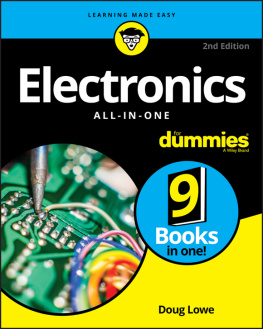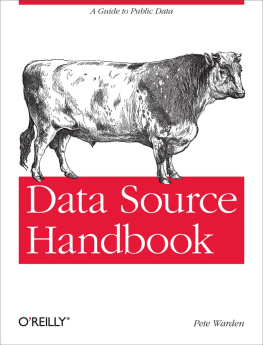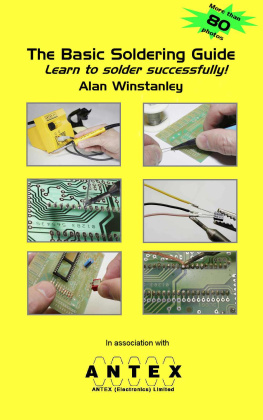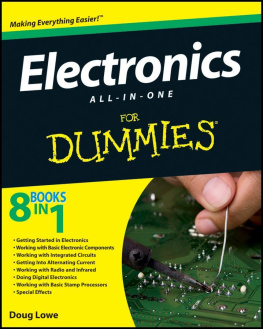coll. - Electronics Calculations Data Handbook
Here you can read online coll. - Electronics Calculations Data Handbook full text of the book (entire story) in english for free. Download pdf and epub, get meaning, cover and reviews about this ebook. year: 0, genre: Home and family. Description of the work, (preface) as well as reviews are available. Best literature library LitArk.com created for fans of good reading and offers a wide selection of genres:
Romance novel
Science fiction
Adventure
Detective
Science
History
Home and family
Prose
Art
Politics
Computer
Non-fiction
Religion
Business
Children
Humor
Choose a favorite category and find really read worthwhile books. Enjoy immersion in the world of imagination, feel the emotions of the characters or learn something new for yourself, make an fascinating discovery.

- Book:Electronics Calculations Data Handbook
- Author:
- Genre:
- Year:0
- Rating:3 / 5
- Favourites:Add to favourites
- Your mark:
- 60
- 1
- 2
- 3
- 4
- 5
Electronics Calculations Data Handbook: summary, description and annotation
We offer to read an annotation, description, summary or preface (depends on what the author of the book "Electronics Calculations Data Handbook" wrote himself). If you haven't found the necessary information about the book — write in the comments, we will try to find it.
coll.: author's other books
Who wrote Electronics Calculations Data Handbook? Find out the surname, the name of the author of the book and a list of all author's works by series.
Electronics Calculations Data Handbook — read online for free the complete book (whole text) full work
Below is the text of the book, divided by pages. System saving the place of the last page read, allows you to conveniently read the book "Electronics Calculations Data Handbook" online for free, without having to search again every time where you left off. Put a bookmark, and you can go to the page where you finished reading at any time.
Font size:
Interval:
Bookmark:
Daniel McBrearty

Daniel McBrearty is a freelance electronics engineer specializing in audio systems. He was an RAF electronics technician for several years before studying for an HND at Luton College of Higher Education. Thereafter he worked for various companies including Soundcraft Electronics and Drake Electronics. He is currently involved in the redevelopment of the Royal Opera House, Covent Garden. His other interests include playing the saxophone.
Newnes
An imprint of Butterworth-Heinemann
Linacre House, Jordan Hill, Oxford OX2 8DP
225 Wildwood Avenue, Woburn, MA 01801-2041
A division of Reed Educational and Professional Publishing Ltd
 A member of the Reed Elsevier plc group
A member of the Reed Elsevier plc group
First published 1998
Daniel McBrearty 1998
All rights reserved. No part of this publication may be reproduced in any material form (including photocopying or storing in any medium by electronic means and whether or not transiently or incidentally to some other use of this publication) without the written permission of the copyright holder except in accordance with the provisions of the Copyright, Designs and Patents Act 1988 or under the terms of a licence issued by the Copyright Licensing Agency Ltd, 90 Tottenham Court Rd, London, England W1P 9HE. Applications for the copyright holders written permission to reproduce any part of this publication should be addressed to the publishers.
British Library Cataloguing in Publication Data
A catalogue record for this book is available from the British Library.
ISBN 07506 3744 7
Library of Congress Cataloguing in Publication Data
A catalogue record for this book is available from the Library of Congress.

Typeset by Jayvee Computer Services and Exports Pvt. Ltd., India
Printed and bound in Great Britain by Biddies Ltd., Guildford and Kings Lynn
This book began life as a selection of tables for electronics engineers. Dealing with such common requirements as setting op-amp gains, forming non-standard resistor values from standard pairs and setting CR time constants, it was my hope that such a book would find common favour.
In writing explanatory notes to accompany these tables, I found myself constantly wondering how much knowledge to assume on the part of the reader. After all, the book should be as useful to a beginner as to a professional with 20 years of experience.
The time came to make a decision, and Part One was born. In it I have attempted to go from first principles to the point where the reader can hope to understand the workings of the circuits discussed in Parts Two and Three with little prior knowledge. My intention has been to be non-mathematical, logical and concise. I have drawn a line at explaining the workings of electronic devices as there is not time or space, and this book only deals with them in the final chapter. An overview of the op-amp is given there. I hope that Part One provides a useful foundation for the beginner and a point of reference for the more experienced.
How well all this works as a whole will not be seen until the book is subjected to the final test by its readership. It is my hope that it will prove a valuable aid to you, whatever your level of experience. I will be happy to receive comments, criticism or suggestions for future improvement (and also to hear about any places where my spellchecker replaced squarewave with scurvy without my asking it to).
by mail:
Dan McBrearty
c/o Butterworth-Heinemann
Linacre House
Jordan Hill
Oxford OX2 8DP
UK
or by email:
Daniel McBrearty
December 1997
Thanks are due to Jim and Sybil McBrearty, for love and support in this; Eric Pressley and John Charlton, from whom I have learnt a great deal; all the staff at Butterworth-Heinemann for making the book a reality; William L. Bahn for helping me to convice myself that tuned circuits really should do what they do; and Hilary and Fi for putting up with my moods while I wrote!
Basic Concepts
In this part of the book we take a look at the founding principles of electronics, from voltage, current and Ohms Law to some basic ways to analyse circuits mathematically. If you know all of this then skip it, using it for reference as required. If not then read on.
I have tried to arrange ideas so that you are introduced to them sequentially, but this is a bit impractical in places. So if you are a real newcomer to electronics Id like to suggest two readings; the first to get an overview of each topic, the second to cross-refer between them and to begin to see how they relate to each other.
Before getting into the technical stuff, we might wish to ask ourselves what electricity is. My first recollection of thinking about it (though I did not know that I was) is of being a child and dismantling a prized radio to find out that no one was inside; just a mind-boggling collection of small coloured objects which evidently were not sweets, though some looked like them. My first direct experience of electricity was more sudden; an electric shock from a bar fire while trying to melt some plastic on it. I knew it was hot, but hadnt expected that! Later I came across the manual for a record player and amplifier in the house, which was old-fashioned enough to come with a circuit diagram. I was fascinated by it. It meant something to someone, but these hieroglyphics were like no language that I could figure out.
Later I took a technicians course, and a confusing set of concepts was presented to me as explanation for this unseen and magical force. Electricity, I had now realised, is used in a huge range of ways; recording sound, reproducing pictures, lighting our darkness and a lot else besides. All this was, they told me, due to unseen little balls which whiz around in some materials, creating equally unseen lines which can cause little balls in other places to whiz around as well. And this the mental territory of staid, rational looking people who would probably claim that they dont believe in magic.
I have to confess that, some years later, I have still not seen the little balls or the lines which they fling about, and Im not very sure that I really understand them. But I have managed a reasonable career as a technician and an engineer, and I believe that I would have a fair chance of fixing my cassette machine, TV or house wiring should they misfunction. On the whole, I have not thought about the antics of little balls very much (though I suppose that it helps to know that they are there). Electricity looks, in my mind, more like water, wires like pipes, resistors like very thin pipes, capacitors like pairs of half-filled balloons which squash against each other, and inductors like well something else. (I never said that the analogy was complete or accurate.)
I say all this as, I hope, a source of comfort to the new student of the subject who may be suffering the same pangs of insecurity about atoms, electrons and so on that I went through. Unless you feel strongly to do otherwise, let them live their own strange lives. You can be a very competent and effective user of the principles of electricity and electronics without needing to know much about them (though the same might not be said of completing your college course). Leave it to the physicists. What helps a great deal is having a good and clear grasp of the laws of electricity, and being able, as much as is possible, to prove them to yourself.
Font size:
Interval:
Bookmark:
Similar books «Electronics Calculations Data Handbook»
Look at similar books to Electronics Calculations Data Handbook. We have selected literature similar in name and meaning in the hope of providing readers with more options to find new, interesting, not yet read works.
Discussion, reviews of the book Electronics Calculations Data Handbook and just readers' own opinions. Leave your comments, write what you think about the work, its meaning or the main characters. Specify what exactly you liked and what you didn't like, and why you think so.

